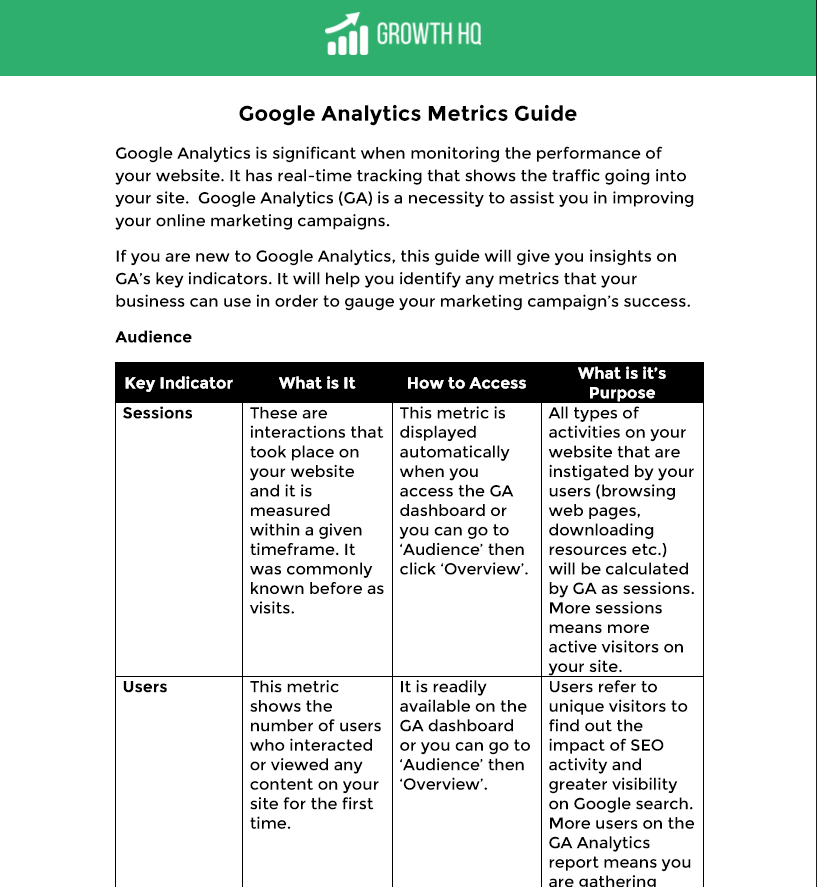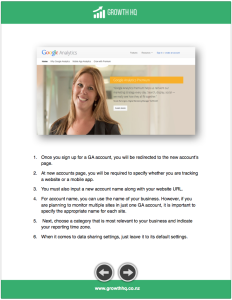I often have two questions for a business owner about their marketing.
How much do you spend to acquire a customer?
How much is that customer worth over their lifetime with you?
Some can give real numbers. Most can’t.
Knowing those two figures makes a huge difference to a business.
If you know your numbers you can outspend your competition and take customers from them.
If you know your numbers you can get a higher quality of customer who will spend more.
If you know your numbers you can turn low spending customers into high spending ones just by knowing that they are low spending…
The good news is it’s never been easier to know those numbers and how they relate to your website.
Why are metrics critical to your business website?
As a website owner, you need to gather relevant data that gives you an overview for your campaigns. This is why metrics play an important role in improving the performance of your website.
During the 90’s and mid-2000, website owners did not have the means to track their own campaigns. Web analytics were not yet available to the masses. Only large companies could afford to setup it up. And it was tedious work.
In 2006, Google launched its own web analytics tool. They made it a free tool that everyone could use.
Using the information that Google Analytics provides you can get a picture of where you should be focusing your attention online.
What are the Most Popular Metrics To Assess
At present, more and more online marketers are using metrics to assess strategies. There are different types but here are some of the most popular ones used today:
- Visits Referred by Specific Search Engine Terms and Phrases
This metric shows keywords or key phrases that are responsible for sending traffic to your website. Some of these keywords can come from any content that you published on your website.
This is good to track on a regular basis as it will help you identify new and profitable keywords. This can also help you understand the performance of your current content strategy and take steps to boost your search ranking, if needed.
- Pages Receiving Traffic from the Search Engines
Are your pages getting indexed? This metric shows the website pages that are getting indexed through the number of incoming traffic. You can also track certain issues with your site like: link acquisition, site architecture, XML Sitemap, metadata and uniqueness of your content.
- Conversion Rate by Search Query
What keywords or key phrases continually send visitors to your site and convert this traffic to paying customers?
Tracking this metric will enable you to dig deeper and find out the most effective landing pages on your site. You can also pretty much ballpark how you can tweak your strategy to address the pages that are not performing well.
Using Analytics Tools to Optimise Your Content
There are many types of analytics tools in the market today. For this segment, our focus are metrics in Google Analytics. It is perfect to use since it is free but very powerful.
Some of the most important data you can get from the behaviour report are:
Pageviews – The number of pages viewed by your visitors. This will include repeated views on a single page.
Average Time on Page – Amount of time viewers spend on a particular page on your site.
Unique Pageviews – This is the number of unique visitors who have viewed a page at least once during their visit.
Bounce Rate – This is the percentage of single-page visits to your site. If a visitor goes to one of your pages and exits the site from the same page they entered in. This action will be factored in into the bounce rate.
One other tool that offers real-time analytics tracking is Woopra. This tool is a desktop application that can feed live visitor stats. One awesome feature exclusive to this tool is its capability to chat live with individual site visitors. This is a great feature for e-commerce sites, but it would also be an invaluable feature for any type of business.
Key Takeaway
Metrics help you measure your success when doing online campaigns. If you have identified your buyer persona and know their online behaviour, you can make changes accordingly and segment your market. You can better address their pain points if you have a deeper understanding of how they behave when making selections and finally doing a purchase.
If you can clearly identify who spends more time on your site and on what particular content, when and where they enter and exit, it can point you to the stage when your customer decides to purchase and give you an idea why they stopped at certain points.
Knowing these, you can already ask yourself the following questions and make adjustments based on your answers:
- Do I need to change the format of my content?
- What kind of format works best for my market?
- What kind of information do I need to give out to my audience?
- What information is lacking in my content that my audience needs?
- What particular pages in my website needs adjustment?
- How can I maintain the interest of my visitors to a particular page?
Enjoyed this article? Download a copy of our Google Analytics Metrics Guide and get to know what metrics matter most to grow and improve your business.

You can also download a copy of our BOOK and get the exact strategy we are using to grow our clients’ businesses.
If you have questions, send us a message or drop us some questions in the comments below.
Read Our Most Popular Posts:





